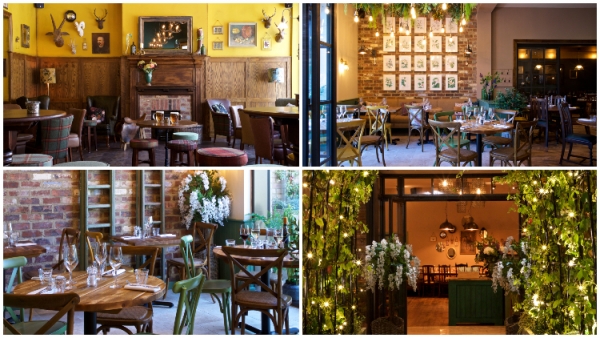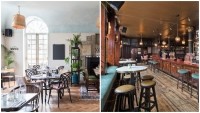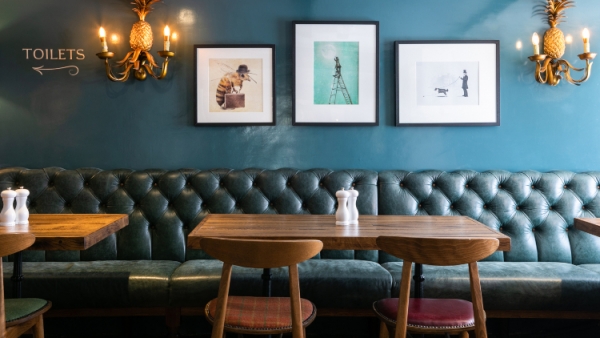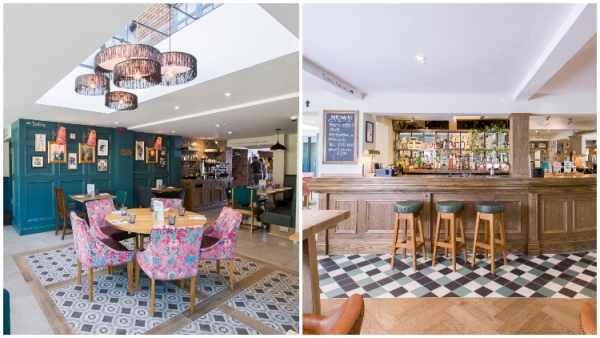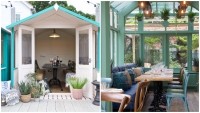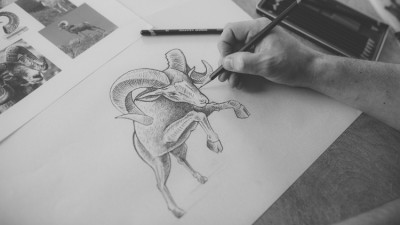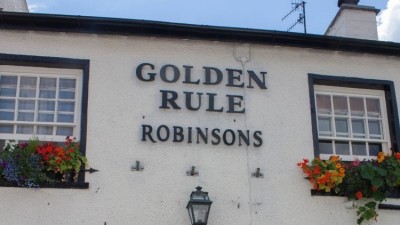Pub design ideas: 'making people love the spaces they’re in'
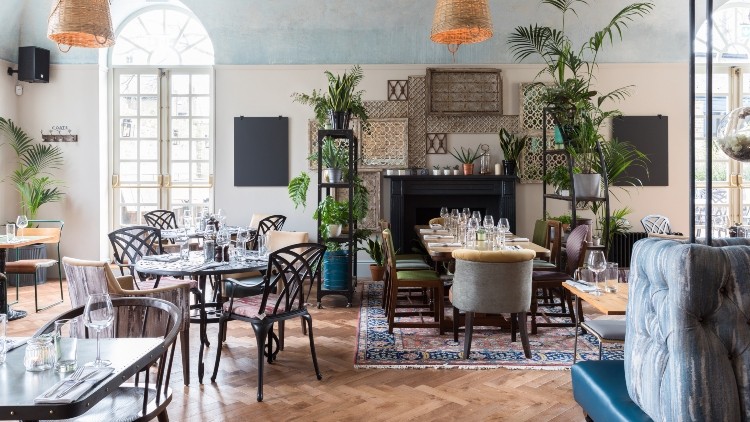
Over the past five years, Brits have spent £40bn improving their homes, splashing their cash on stylish sofas, the latest lighting or wondrous wall coverings. Designer décor is big business, and the presence of image-based social media networks Instagram and Pinterest make it easier than ever for us to stay on top of interior design trends.
With consumers becoming increasingly sophisticated and turning their own homes into designer dens, they expect the same – or better – from the places they choose to drink, dine and socialise in. In the same way they would visit their local for pint of draught ale or a steak and triple-cooked chips that they might not be able to replicate at home, they want their surroundings to deliver something unique.
Affluent areas
Brasserie Bar Co head designer Inge Watrobski is conscious of this fact. As the person responsible for the interiors of the White Brasserie Company pubs, which pride themselves on the quality of their décor as much as their food, drink and service, she recognises the importance of staying ahead of design trends to delight customers, while also creating a space with a welcoming feel.
“Many of our pubs are located in fairly affluent areas and we are very aware that a lot of our guests are aware of style trends and don’t want to go out and eat somewhere that is a bit old-fashioned,” she explains. “I wouldn’t say our interiors are trend-driven, but we are aware of trends. Our pubs are all comfy, lovely places to be, but you’ll certainly see some trend-led elements in them.”
White Brasserie Company’s 19 pubs each feature unique interiors, subtly influenced by their location. For example, the recently opened Oaks at Highcliffe, Dorset, is a street away from the beach, so has a ‘Hamptons, seaside vibe’ with vivid blue leather banquettes, green wood panelling and fresh, light-coloured soft furnishings.
The Red Deer in Horsham – the latest property in the estate to open – is located in a former Waitrose supermarket in the centre of the West Sussex market town.
The large space has distinct zones helpfully defined by the style of the interiors. The bar area, for example, is more traditional with dark wood chairs and tartan covered stools and banquettes, while the restaurant area is light and airy with more of a Victorian warehouse theme.
Whatever the style, each space has a cared-for and inspiring feel to the design. Watrobski uses a technique called ‘layering’ when approaching the interiors of the pubs she designs. To ensure a luxury feel that won’t date, or look tired too quickly, the group invests in fixtures like flooring, the bar and leather for banquettes that will last, then ‘freshens’ the look with new soft furnishings, pictures and light fittings every two to three years.
“We don’t skimp on things like flooring and bars,” she says. “This is where the quality is really noticed. And if you use good-quality natural materials, like leather and Abraham Moon wool, there’s a sense of wearing them in, rather than wearing them out.”
Using natural materials of a high quality that are durable and can age well is a technique used by many designers of high-end pub interiors.
“A good example is the new oak bar fitting, which sweeps across the central space at the Old Cock in Harpenden,” illustrates Abi Perry-Jones, creative director at Jones Architecture & Design, who was commissioned to redesign the pub by Apostrophe, the managed house division of Charles Wells, in a way that would ‘retain a British pub feel with an upscale design’.
“Oak is an expensive material but the visible grains in the timber and traditional mouldings give a real sense of style and will stand the test of time. This bespoke piece is designed to a specific height with a very specific chunky bar top depth and overhang, which we and the client felt was just right for customers to sit up at the bar or lean against to give a quality feel and appearance.”
Guy Bostock, director and co-owner of Concorde BGW, which has worked on a number of projects for pubs, including the Half Moon at Herne Hill, south London, and the Castle Inn, Lulworth Cove, Dorset, believes in the old adage ‘you get what you pay for’.
“Paying that additional £10,000 for a pewter bar top may seem a lot at the time but, as it ages, the patina just gets better and better, or that feature wing chair that gets more comfortable as the months go by highlights spending on key areas and items can pay off.”
Competitive times
Investing in high-ticket items that denote quality and will improve over time as the basis of a luxury design or refit is a good start, but how do pubs maintain the luxury feel with interiors when they will be visited by hundreds, or thousands, of customers each week?
Many pairs of shoes will be tramping over plush carpets and rugs, and food and drink will inevitably get spilt on designer seating.
“It’s quite difficult,” states Watrobski. “This is why some budget hotels go for contract-type materials where you don’t get that high-end luxury finish.
“Businesses used to restyle or rebrand every eight years, but there is so much competition out there now and people are always looking for something new, so we can’t afford to wait that long any more. At White Brasserie Company, we are constantly evolving our designs and refresh the décor every three years. It’s expensive, but it allows us to use certain materials that are softer, warmer and more tactile because we know that we’ll replace them when they wear. If you want to have that luxury feel you have to build that into your budget.”
Mindful that she is working with a clients’ budget, Perry-Jones takes a slightly different tack. She says: “We are careful to use materials and fixtures and fittings that are appropriate for where they are to be located,” she says, opting to use hardwearing fabrics and leather for seating in busier areas, while ceramic tiles, which are durable and easy-to-clean work well around the bar area.
“Expensive rugs or finishes are certainly better located in areas of less footfall,” she adds. “And we often locate more luxurious fabrics around the rear and sides of lounge chairs, which will get less use but reveal a splash of luxury.”
More than a token gesture
Bostock says: “There are lots of little tricks we have learnt over the years to help with this like using leather seat pads on high-use fixed seating with a great fabric on the backs to give that hit of colour, or beautiful herringbone wool to provide softness. This way, accidental spillages won’t mark the seat, and the wear and tear rates won’t get the pub looking tired too quickly.”
Pubs seeking to communicate luxury through their interiors should note that they won’t achieve it simply by refreshing velvet cushions, or featuring polished marble table tops, however. As all designers explain, it takes more than a statement lamp or two to evoke the sense of luxury. Customers have to be able to feel it as well as see it.
“Luxury is as much an emotion in our world as a finish, so we concentrate on making people love the spaces they’re in,” explains Bostock. “You can have the most amazing handmade, bespoke dining chair set at a beautiful table with a specially selected marble table top from an Italian quarry, but if this is so close to the next door table that you bang elbows, your customers won’t think they’re in a luxurious environment. It’s the full package that counts.”
As Perry-Jones points out “good design is not just about the finishes”, it should enhance the overall customer experience.
“It was important to our client that the Old Cock remained a ‘great British pub’,” she says. “The budget allowed us to really play with, and adapt, the existing layout so that spaces link together and operate seamlessly. Staff operations and the customer experience flows really well and the layout definitely contributes to a great customer experience where staff can be attentive.”
This ethos is at the heart of Watrobski’s approach to design at White Brasserie Company. The designer sees ergonomics as “a huge part of design” and will continually review her ideas from planning stage to completion to ensure the layout works with her plans for the décor.
“We make sure every seat is a comfortable seat and that everyone feels comfortable wherever they are. If a table is in a walk-through area, for example, you will need slightly more substantial chairs, so someone doesn’t feel vulnerable. We also make sure that everyone has a view, or something to look at as well as ensure the servers can do their job properly and deliver food and drink to the table easily. Small things like that can make a huge difference to how people feel. We really focus on every little detail.”
“We aspire for a customer experiences where words like comfortable, cosy, elegant and unexpected are expressed,” adds Bostock. “This helps to build a sense of luxury in the sites, we want people to feel special and that the interiors of a job go beyond their expectations when they visit.”
To find out more about pubs for sale, lease and tenancy visit our property site.
